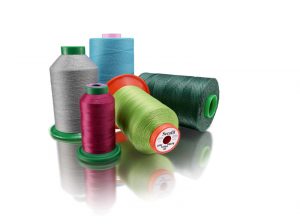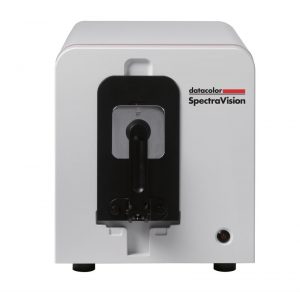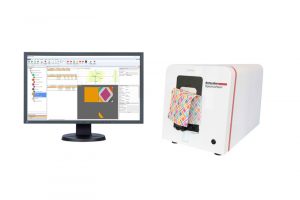
By Michael Strittmatter
Digitalization has been on the rise in the textile industry for quite some time, but throughout the recent COVID-19 pandemic, it has taken off at an accelerated pace, especially as the industry continues adapting to non-traditional remote work environments. Because of this shift to digitalization in the industry, more and more textile and apparel companies are starting to embrace the efficiencies of a fully digital color management workflow, which can offer a myriad of benefits.
Take, for instance, the yarn and thread experts from Amann Group, an international manufacturer of high-quality sewing threads, embroidery threads and Smart Yarns. They are a prime example of a company that has benefited tremendously from adopting comprehensive digital color management solutions throughout its entire global structure.
Why Digital?
Yarn quality and consistency is a top priority at Amann. This includes getting color right, every time — when product colors are inconsistent, consumers will view a brand as inferior or cheap. Because quality is so crucial to Amann’s business and their customers, they decided to standardize all of their production locations to guarantee consistent color globally.

Achieving consistent color across multiple components of one garment that has different components — such as the zippers, buttons, trims and snaps of a jacket or the lace, mesh, sole and body of an athletic shoe — is challenging. Quality control can be especially difficult when products have different coatings and gloss levels. Additionally, a single garment can contain multiple types of yarns stitched close together, which means a lot can go wrong if color is not controlled properly.
This is why a uniform digital color management approach across the supply chain is crucial to ensuring quality and customer satisfaction. By implementing digital color management solutions, textile and apparel companies can have confidence that colors will be accurate and repeatable.

Controlling Color from Start to Finish
At Amann and other textile companies that implement digital color management throughout the entire supply chain, the process starts at the very beginning with raw materials. Different substrates have different colors and whiteness levels, so it is important to include whiteness tolerances in supplier specifications before dyeing begins.
After a batch is dyed, a sample is prepared to remove temperature and humidity variation. Then, it goes through both visual and digital assessments to ensure the color meets expectations. Adding a digital component to this step is key, as relying on visual evaluations alone can be problematic, leading to potential delays and costly errors. We all see colors differently, so someone may see a perfect match where another sees variation. Digital measurements, combined with visual evaluations, removes the typical subjectivity associated with dyeing (and re-dyeing), resulting in a faster color match.
Amann has finishing machines installed in all dye houses to simulate the process. When the approval process can be done immediately after dyeing, companies can quickly determine if a batch is within specifications or has to be reworked, improving speed and efficiency even further.
A final visual and digital color evaluation check happens before a product leaves Amann’s production site, providing an extra layer of confidence that the customers will receive the highest quality possible.
Amann dye houses span across the globe, from Romania to Germany to China, and they all dye on the same material, so the results must be identical. Amann utilizes virtual samples across the global supply chain, so each dye house can access centralized data for quality checks. With digital color data, recipes can be exchanged among different facilities with a guarantee that results will be identical since every location has access to the same data. We have seen Amann successfully meet important quality requirements by leveraging a full suite of digital color management solutions every step of the way.
Post-Production Best Practices
Even after a product leaves a company’s production site, there are still steps companies must take to ensure quality and consistency down the road. Part of a fully digital workflow includes instrument monitoring to compare measurement values of all devices across all locations, as well as regular maintenance. Amann has seen first-hand how important it is to receive ongoing maintenance and support, to ensure that every device across the supply chain is within the same tolerance range and that the entire digital process is running smoothly.

Looking Ahead At The Latest Advancements
Textile and apparel companies have come a long way in implementing a fully digital approach to color management. However, there is still room to grow and digitize even further as technology continues to advance. Amann has plans to start using data from previous production lots to increase accuracy of future batches.
As sustainability continues to be a priority in the textile and apparel industry, we expect to see other companies embrace sophisticated digital color management solutions to not only increase efficiencies, but to also decrease the amount of waste they are producing from dyes, water and chemicals. In fact, technology now allows development of an entire season digitally without a single physical sample. Reducing physical samples can help companies drastically minimize environmental impact and with digital color management solutions, they can be eliminated completely.
Digital color management is the future. A fully digitalized workflow offers extensive benefits to textile companies. Thanks to their fully digital workflow, Amann has been able to reach their goal of deciding during the color development process whether the batch is within specifications or needs to be reworked, saving time and money. From speeding up color development and improving quality control to cutting costs and increasing sustainability, a digitized color management system can truly streamline the entire process.
Editor’s Note: Michael Strittmatter is a sales Manager at Datacolor, Lawrenceville, N.J.
June 15, 2021




